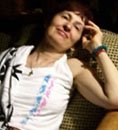BLOOMS IN THE BUTTONS BOX
THE BOOK
..........................-
TENDER BUTTONS
THE SUBBOOK
...................-
OBJECTS
THE SUBPOEM
...................- COLORED HATS: NUMBER 43
WORD
COUNT......................-
81
THE SUBPOEM
...................- A
FEATHER: NUMBER 44
WORD COUNT......................-
36
THE SUBPOEM
...................- A BROWN: NUMBER 45
WORD
COUNT......................-
21
STANZA(S)............................-
1 each
THE
LEADER........................-
THE STEINY ROAD POET
CO-LLABORATORS..............-
MODPO
STUDENTS/THE BUTTONS
GENRE..................................-
VIRTUAL OPERA
LOCATION............................-USA,
UK, Australia, Philippines, S. Africa, Canada.
TIME......................................-
ALL HOURS OF EARTH’S CLOCK
TONE.....................................-
DEVIL MAY CARE
“Measuring,
volumes, quantities run through these subpoems. Differences and change.
Underneath the detail, a scientist at work?” Karren Alenier
“You can't have
‘pearl necklaces’ if you use those colorful hats!” Claudia Schumann
COLORED HATS.
Colored hats are necessary to show that
curls are worn by an addition of blank spaces, this makes the difference
between single lines and broad stomachs, the least thing is lightening, the
least thing means a little flower and a big delay a big delay that makes more
nurses than little women really little women. So clean is a light that nearly
all of it shows pearls and little ways. A large hat is tall and me and all
custard whole.
A FEATHER.
A feather is trimmed, it is trimmed by
the light and the bug and the post, it is trimmed by little leaning and by all
sorts of mounted reserves and loud volumes. It is surely cohesive.
A BROWN.
A brown which is not liquid not more so
is relaxed and yet there is a change, a news is pressing.
WHAT IS SAID
IN THE BLANK SPACE
 Mary Armour said both in jest and unwavering seriousness
that “along
with clitoral pearls and labial little ways, something here speaks to
ekphrasis and Gertrude's perception of Modernist art,
the blank spaces and volumes, proportions and relational
perspectives.”
Mary Armour said both in jest and unwavering seriousness
that “along
with clitoral pearls and labial little ways, something here speaks to
ekphrasis and Gertrude's perception of Modernist art,
the blank spaces and volumes, proportions and relational
perspectives.”
The Steiny
Road Poet sees that discussion of the blank
spaces (“Colored Hats.”) began in “In Between.” when Peter
Treanor reflected on the separation of such words as “satin wood” and “foot
path.” It led Karren [a.k.a. Steiny] to say, “I take this opening of space
between certain words to be Stein protesting what she and Alice were not
allowed to say in public—that they loved each other, that their love was a
sacred trust.
THE CATALOG
OF THINGS SAID
Among the
associations made with this set of subpoems together and separately were:
insects—a brown butterfly, a brown recluse spider, lightening bugs; signs of
spring; sexual practice, pregnancy, and birth control; undergarments,
cunnilingus, virgins; Civil war nurses, military caps and insignias; Little Women by Louisa May Alcott; the
abolitionist John Brown; knitting; Penelope and weaving; black hatters (the
headwear of Jewish Orthodox men); and writing and printing. Here is a mix of
some of the highlights of the discussion and some thoughts from Steiny:
from Peter on “Colored Hats.”:
“Tall hats,
curls that are worn, single lines, broad stomachs, (en) lightening, pearls of
wisdom and little ways make me think big
hats and curls.”
STEINY’S
JEWISH ORTHODOX TAKE ON “COLORED HATS.”
Back in the
1950’s in America the word “colored” was a moniker applied to Black people in
my not entirely assimilated Jewish community. So by that measure, Colored
hats become Black hats, as in wide-brimmed felt hats with an exaggerated tall
crowns worn by ultra-orthodox Jewish men who also wear side curls called payot.
In Stein’s text, these hats and curls are accompanied by an addition
of blank spaces, this makes the difference between single lines and broad
stomachs. In defining Tzimtzum, Kabbalist Isaac Luria taught that God
initiated creation by contracting his infinite light (making an empty/blank
space) to allow for a conceptual space in which finite and spiritual could
exist. Conceptually one might stretch the imagination here and say single
lines could be the male sexual organ making the difference in a
female to impregnate and cause a broad stomach (pregnancy).
Then in this passage: the least thing is lightening, the least thing
means a little flower and a big delay a big delay that makes more nurses than
little women, the inception of sperm (a flash of human chemical
lightening) and egg flowers after a nine-month delay resulting in the female
needing to nurse the child or children which might also be female and result in
little women. So that clean light might indeed be God’s infinite light paving the way for the
pearls of semen which create little children within the custard (a dish of milk
and eggs) of the female orbit. Alternatively, lightening could also be
(according to The Free Dictionary) “the
sensation, experienced by many women late in pregnancy when the head of the
fetus enters the pelvis, of a reduction in pressure on the diaphragm, making it
easier to breathe.”
The large-brimmed hat with the tall crown contains an empty/blank space
for the spiritual learning [(en)lightenment] that Jewish orthodox men acquire
throughout their lives. Stein, who thought of herself as a male personae, might
be saying this hat and what it represents may be how she thinks of herself (me)
with all the observing, thinking, and writing she does.
Earlier in Tender Buttons, an
association to Tzimtzum was made in the discussion of “Objects.” but on a more cosmic and
spiritual level. Here Stein brings us in balance with the cosmic and physical
world.













